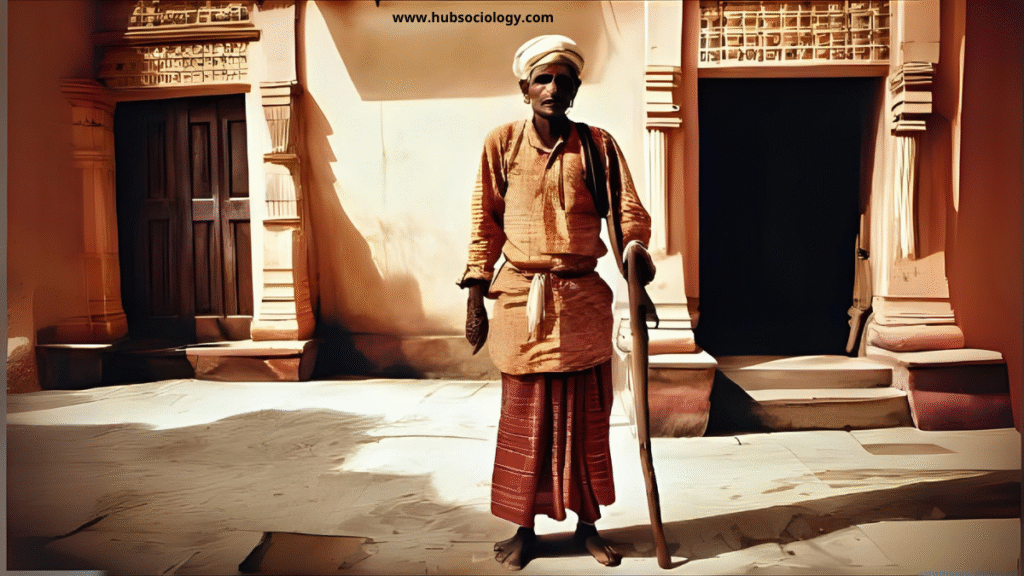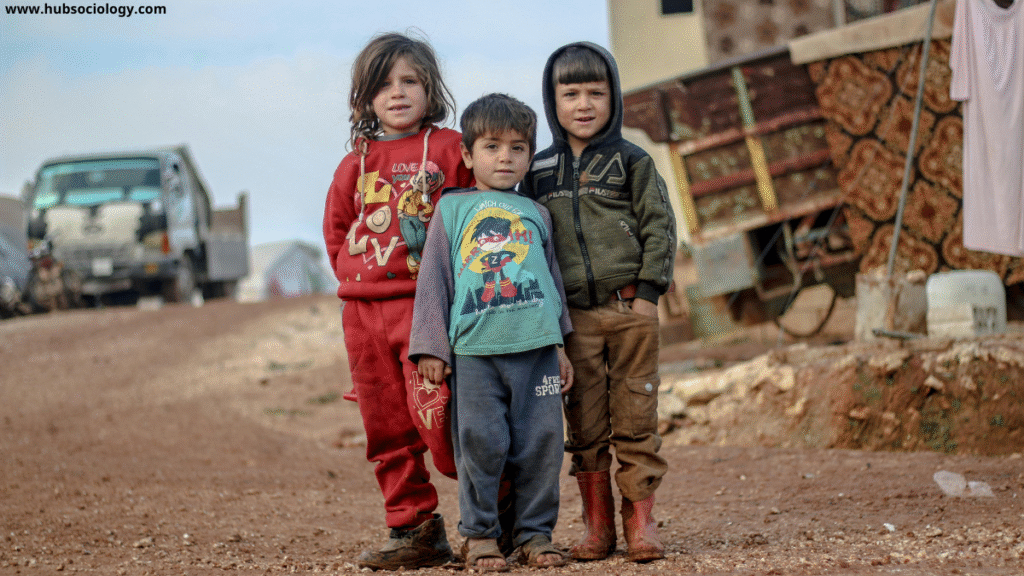Introduction on Caste and Class Stratification
Human society has always been organized around systems of stratification that determine access to resources, power, and prestige. Two of the most important and widely discussed forms of social stratification are caste and class. Both represent hierarchical structures, yet they differ in their basis, rigidity, and implications for social mobility. In sociology, caste and class stratification are not just seen as historical phenomena but as dynamic systems that continue to influence modern societies in various ways.
This article explores caste and class stratification from a sociological perspective, analyzing their features, functions, differences, and interrelationships.
Table of Contents
Understanding Social Stratification
Social stratification refers to the structured inequality among individuals and groups in society. It involves ranking people based on various attributes such as wealth, occupation, education, power, or birth status. Sociologists view stratification as a universal phenomenon, but its form differs across societies. While caste stratification is more associated with traditional societies like India, class stratification is characteristic of industrial and modern societies.

Caste Stratification: Features and Sociological View
The caste system is a closed, hereditary form of social stratification. It is historically rooted in the Indian subcontinent and is one of the most rigid forms of hierarchy studied by sociologists.
Key features of caste stratification include:
- Hereditary Status: A person’s caste is determined by birth and cannot be changed during their lifetime.
- Endogamy: Marriage is strictly restricted within one’s caste group.
- Occupation-Based: Traditionally, castes were linked to specific occupations, such as priests (Brahmins), warriors (Kshatriyas), traders (Vaishyas), and laborers (Shudras).
- Hierarchy: Castes are ranked in a strict vertical order, from ‘pure’ to ‘polluted.’
- Social Closure: Social interaction between castes is restricted, often enforced through practices like rules of commensality (who can eat with whom).
- Religious Legitimization: The caste system was historically justified by religious texts and traditions.
Sociological perspectives on caste:
- Louis Dumont emphasized caste as a system based on the opposition between purity and pollution.
- M. N. Srinivas introduced the concept of Sanskritization, explaining how lower castes attempted upward mobility by imitating practices of higher castes.
- Andre Béteille analyzed caste in relation to class, showing how caste inequalities often intersect with economic disparities in India.
Class Stratification: Features and Sociological View
Class stratification refers to the division of society based on economic resources, occupations, and life chances. Unlike caste, it is an open system where mobility is possible.

Key features of class stratification include:
- Economic Basis: Classes are largely determined by wealth, property, and income.
- Achieved Status: Individuals can improve their class position through education, occupation, or entrepreneurship.
- Fluid Boundaries: There are no strict prohibitions on intermarriage or interaction between classes.
- Relative Identity: Classes are defined in relation to others, such as upper, middle, and lower classes.
- Global Phenomenon: Class divisions are found in almost all modern societies, regardless of culture.
Sociological perspectives on class:
- Karl Marx viewed class as rooted in relations of production, dividing society into bourgeoisie (owners of means of production) and proletariat (workers).
- Max Weber expanded this view by including wealth, prestige, and power, leading to a multidimensional model of stratification.
- Kingsley Davis and Wilbert Moore explained stratification as functional, arguing that unequal rewards motivate people to fill important roles in society.
Differences Between Caste and Class
While both systems create social inequality, their characteristics differ significantly:
| Aspect | Caste Stratification | Class Stratification |
|---|---|---|
| Basis | Birth and heredity | Economic factors (income, occupation, wealth) |
| Mobility | Closed, little to no mobility | Open, mobility possible |
| Marriage | Endogamous | No strict restrictions |
| Change | Resistant to change, traditional | Dynamic, influenced by modernization |
| Universality | Historically specific (India, South Asia) | Universal, found in all modern societies |
| Identity | Fixed and ascriptive | Achieved and flexible |
Interrelationship Between Caste and Class
Although caste and class are conceptually distinct, in practice they often overlap. In India, caste has historically determined access to economic resources, leading to caste-based classes. For example, higher castes like Brahmins and Vaishyas often had greater wealth and education, while lower castes remained in menial jobs.
With modernization, urbanization, and globalization, class-based stratification has become more prominent. Yet, caste continues to shape opportunities, marriage choices, and political alignments. This interrelationship has been described as the “caste-class nexus.”
- In rural India, caste often influences land ownership, which in turn shapes class position.
- In urban areas, while education and employment create new classes, caste-based discrimination still persists.
- Affirmative action policies like reservations in India attempt to reduce caste inequalities, but they also intersect with class-based concerns.
Caste and Class in Contemporary Society
In modern India, caste has not disappeared but has transformed. Instead of functioning solely as a religious or ritual hierarchy, it now often serves as a political and economic identity. Caste associations play roles in elections, job reservations, and lobbying for government benefits.
Class, on the other hand, has become increasingly significant due to industrialization and globalization. A rising middle class has emerged, defined by education, professional jobs, and consumer lifestyles. At the same time, poverty and inequality continue to plague lower classes, often overlapping with lower castes.
Globally, class stratification dominates discussions of inequality. Issues such as income inequality, unemployment, and wealth concentration highlight the significance of class divisions in capitalist societies. In countries like the United States, while there is no caste system, racial and ethnic hierarchies often intersect with class.
Functional and Conflict Views on Caste and Class
Sociologists debate whether caste and class systems serve positive functions or perpetuate inequality.
- Functionalist Perspective: Both caste and class are seen as systems that ensure societal stability. By allocating roles and rewards, they maintain social order.
- Conflict Perspective: Marxist and other critical views argue that caste and class perpetuate domination by elites. Caste enforces religious justification of inequality, while class sustains economic exploitation.
- Weberian Perspective: Both systems illustrate how power and prestige intersect with economic status to shape social stratification.
Social Mobility in Caste and Class
- In caste: Mobility is extremely limited. At best, groups could seek higher status through Sanskritization, but individuals remained bound by birth.
- In class: Mobility is more open. Education, skill, entrepreneurship, or migration can change an individual’s class status. However, structural inequalities still limit equal opportunities.
Conclusion on Caste and Class Stratification
Caste and class stratification represent two distinct yet interconnected forms of social hierarchy. Caste, rooted in heredity and tradition, reflects rigidity and exclusiveness, while class, based on economics and achievement, allows for greater mobility. From a sociological standpoint, both systems illustrate how societies distribute resources, power, and prestige, shaping individual life chances.

In contemporary times, the significance of caste has not disappeared but evolved, often intertwining with class in new ways. Class divisions, on the other hand, remain central in understanding inequality at both national and global levels. Studying caste and class together enables sociologists to grasp the complexities of social structure, inequality, and change in modern society.
Do you like this this Article ? You Can follow as on :-
Facebook – https://www.facebook.com/hubsociology
Whatsapp Channel – https://whatsapp.com/channel/0029Vb6D8vGKWEKpJpu5QP0O
Gmail – hubsociology@gmail.com
Exam-style questions on Caste and Class Stratification
5 Marks Questions on Caste and Class Stratification
- Define social stratification.
- Mention any three features of the caste system.
- Distinguish between caste and class in one sentence each.
- What is meant by social mobility in class stratification?
- State the concept of Sanskritization as given by M. N. Srinivas.
10 Marks Questions on Caste and Class Stratification
- Explain the major features of caste stratification in India.
- Discuss Karl Marx’s view of class stratification.
- Compare caste and class as two systems of social stratification.
- How does the caste-class nexus operate in rural India?
- Examine the role of education in promoting class mobility.
15 Marks Questions on Caste and Class Stratification
- Critically analyze the sociological differences between caste and class.
- Discuss the transformation of caste in modern India with reference to politics and economy.
- Examine Weber’s multidimensional approach to stratification and its relevance in understanding caste and class today.
- Evaluate caste and class stratification from both functionalist and conflict perspectives.
- “Caste stratification is rigid while class stratification is fluid, yet they intersect in modern society.” Discuss with examples.
